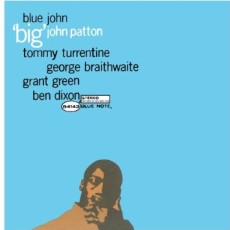
Daily Dose Of Jazz…
Big John Patton was born on July 12, 1935 in Kansas City, Missouri. His mother, a church pianist, taught him how to play the fundamentals. When he was about 13 years old, in 1948, he began to teach himself. He was inspired by the music he heard in Kansas City, but he wanted to play beyond his hometown jazz scene.
In 1954 after high school, he headed east and found professional work in Washington D.C., he found out that R&B star Lloyd Price was playing at the Howard Theater, that he had just fired his pianist and needed a new player. John played a few bars from the introduction to “Lawdy, Miss Clawdy” and was given the job.
It was a five-year relationship that gave him an education he couldn’t have gotten elsewhere. He was Lloyd’s “straw boss” and the leader, he recruited top players including drummer Ben Dixon, who encourage him to check out the Hammond B-3 organ when they played in clubs that had one. A man called Butts first showed Patton how to set up the organ and find the right registrations. When he moved to New York in late 1959, it was his friend Herman Green who played with Lionel Hampton who helped him learn how to play it.
That same year Big John formed his own Hammond organ trio. Blue Note artist Ike Quebec became his mentor, introducing him into Blue Note and to one of the most important relationships in his career, with guitarist Grant Green. He went on to work as a sideman for Lou Donaldson for three and a half years. During the 1960s he became one of the most recognizable figures on the jazz scene and was a driving force of the sound of electric organ.
Over the years he recorded for Blue Note with Harold Alexander, George Coleman, George Braith, Don Wilkerson, Clifford Jordan, Harold Vick, Johnny Griffin, Grachan Moncur III, Ron Carter, Black Star, James “Blood” Ulmer, John Gilmore, John Zorn, Jimmy Ponder, Johnny Lytle, Red Holloway, Art Blakey and Marshall Allen to name a few.
Patton’s style has been resistant to imitation because of its space and economy, often being called minimalist. But he claimed that he emulated the sounds of his favorite trumpet and reed players. By the time the Acid Jazz movement emerged in the 1980s there was a resurgence in interest in his music in the UK and he made several trips to England where he was embraced by the Acid Jazz community.
Patton continued recording until the late Nineties and he developed a loyal following in both Japan and Europe, both of which he toured in addition to his dates in the United States. He recorded as a part of the Red Hot Organization’s compilation album Red Hot + Indigo in tribute to Duke Ellington. He recorded 16 albums as a leader and another twenty-six as a sideman.
Pianist and organist Big John Patton, a major figure in the development of the funk and blues rooted jazz known as soul jazz and considered the inspiration for the Acid Jazz movement, passed away from complications arising from diabetes in Montclair, New Jersey on March 19, 2002.


